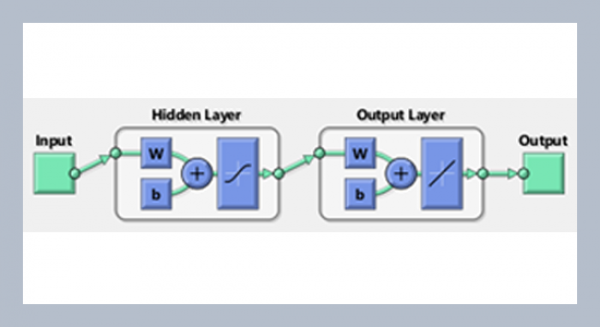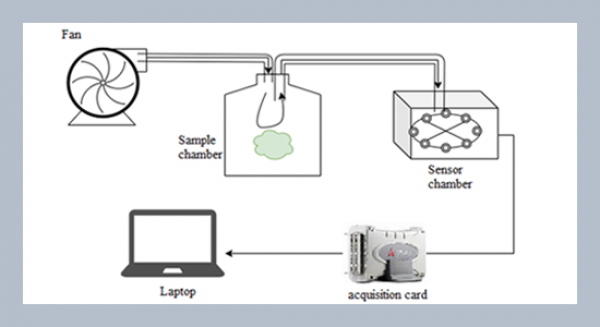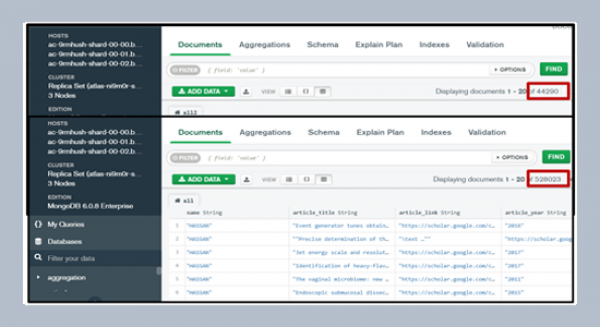REFERENCES
- Aksu, Z., Ozer, D., Ekiz, H.I., Kutsal, T., Calar, A. 1996. Investigation of biosorption of chromium (VI) on cladophora crispata in Two-staged batch reactor. Environmental Technology, 17, 215–220. https://doi.org/10.1080/ 09593331708616379.
- Baral, S.S., Das. N., Roy Choudary, G., Das. S.N. 2009. A preliminary study on the adsorptive removal of Chromium (VI) using seaweed. Hydrilla Verticillata. Journal of Hazardous Materials, 171, 358–369. https://doi.org/10.1016/j.jhazmat.2009.06.011.
- Chakravathi, A.K., Chowadary, S.B., Chakrabarty, S., Chakrabarty, T., Mukherjee, D.C. 1995. Liquid membrane multiple emulsion process of chromium (VI) separation from wastewaters. Colloids and Surfaces A, 103, 59–71. https://doi.org/10.10.16/0927-7757(95)03201-N.
- Chowdhury, A., Bhowal, A., Datta, S. 2012. Equilibrium, thermodynamic and kinetic studies for removal of copper (II) from aqueous solution by onion and garlic skin. Water, 37–51. https://doi.org/10.14294/WATER.2012.4.
- Freundlich, H.M.F. 1907. Uber die adsorption in losungen. Zeitschrift fur Physikalische Chemie (Leipzig), 385–385.
- Ghalay, A.E., Snow, A., Kamal, M. 2008. Kinetics of manganese uptake by wetland plants. American Journal of Applied Sciences, 5, 1415–1423. https://doi.org/10.3844/ajassp. 2008.1415.1423.
- Hamdaoui, O., Naffrechoux, E. 2007. Modeling of adsorption isotherms of phenol and chlorophenols onto granular activated carbon. Part I. Two parameter models and equations allowing determination of thermodynamic parameters. Journal of Hazardous Materials, 381–394.
- Ho, Y. S. and Mckay, G. 2003. Sorption of dyes and copper ions onto biosorbents. Process Biochemistry, 38: 1047–1061.
- Huang, S.D., Fann, C.F., Hsiech, H.S. 1982. Foam separation of chromium (VI) from aqueous solution, Journal of Colloid Interface Science, 89, 504–513. https://doi.org/10.1016/0021-9797(82)90201-6.
- Kamar, F.H., Nechifor, A.C. 2015. Removal of copper ions from industrial wastewater using walnut shells as natural adsorbent materials. U.P.B. Scientific Bulletin, Series B, 77, 141–150.
- Kongsricharoern, N., Polprasert, C. 1996. Chromium removal by a bipolar electro-chemical precipitation process. Water Science and Technology, 34, 109–116. https://doi.org/10.1016/S0273-1223(96)00793-7.
- Krim, L., Nacer, S., Bilango, G. 2006. Kinetics of chromium sorption on biomass fungi from aqueous solution. American Journal of Environmental Sciences, 2, 27–32.
- Krishna, D. 2013. Removal of Cu (II) from aqueous solution using borassus flabellifer coir powder as adsorbent. i-managers Journal of Future Engineering and Technology, 32–39.
- Krishna, D., Shende, D. 2018. Removal of Cu (II) from aqueous solution using Chromolaena leaf powder as adsorbent. International Journal of Applied Science Engineering, 15, 59–70.
- Langmuir, I. 1918. The adsorption of gases on plane surfaces of glass, Mica, and Platinum. Journal of the American Chemical Society, 40, 1361–1403. https://doi.org/10.1021/ja02242a004.
- Omar, W., Al-Itawi, H. 2007. Removal of Pb2+ ions from aqueous solutions by adsorption on kaoline clay. American Journal of Applied Sciences, 4, 502–507. https://doi.org/10.3844/ajassp.2007.502.507.
- Ong, M.C., Kamruzzaman, B.Y. 2009. An assessment of metals (Pb and Cu) contamination in bottom sediment from South China Sea coastal waters, Malaysia. American Journal of Applied Sciences, 6, 1418–1423. https://doi.org/10.3844/ajassp.2009.1418.1423.
- Pagilla, K.R., Canter, L.W. 1999. Laboratory studies on remediation of Chromium –contaminated soils. Journal of Environmental Engineering, 125, 243–248. https://doi.org/10.1061/(ASCE)0733-9372(1999)125:3(243).
- Park, D., Yun, Y.S., Park, J.M. 2010. The past, present and, and future trends of biosorption. Biotechnology and Bioprocess Engineering, 15, 86-102. https://doi.org/10.1007/s12257-009-0199-4.
- Rao, M.M., Ramesh A., Rao G.P.C., Seshaiah, K. 2006. Removal of copper and cadmium from aqueous solution by activated carbon derived from Ceiba pentandra hulls. Journal Hazardous Materials, 129, 123–129. https://doi.org/10.1016/j.jhazmat.2005.08.018.
- Rudre, G., Nataraj, A.G., Manamohan Rao, N. 2012. Finger Millet (Ragi) husk as a low cost adsorbent for removal of Cu (II) from electroplating effluents, Proceedings of international conference on advances in architecture and civil engineering (AARCV). 21st -23rd June: 414–417.
- Seaman, J.C., Bertsch, P.M., Schwallie, L. 1999. In-Situ Cr (VI) reduction within coarse –textured oxide-coated soil and aquifer systems using Fe (II) solutions. Environmental Science and Technology. 33, 938–944. https://doi.org/10.1021/es980546+.
- Singha, B., Das, S.K. 2013. Adsorptive removal of Cu (II) from aqueous solution and industrial effluent using natural/agricultural wastes. Colloids and Surfaces B: Bio interfaces, 97–106. https://doi.org/10.1016/j.colsurfb.2013.01.060.
- Tempkin, M.J., Pyzhev, V. 1940. Recent modifications to Langmuir Isotherms, Acta Physiochim URSS, 217–222.
- Thapak, H.K., Singh, S.T., Kanth, L.P. 2015. Removal of copper from synthetic wastewater by tea waste adsorbent. Journal of Water Pollution and Purification Research, 2, 5–9.
- Tiravanti, G., Petruzzelli, D., Passino, R. 1997. Pretreatment of tannery wastewaters by an ion-exchange process for Cr (III) removal and recovery. Water Science and Technology, 36, 197–207. https://doi.org/10.1016/S0273-1223(97)00388-0.
- Varma, V.G., Misra, A.K. 2016. Equilibrium and kinetics studies on the adsorption of copper onto paddy straw powder. Desalination and Water Treatment, 56, 13081–13090. https://doi.org/10.1080/19443994.2015.1057536.
- Veli, S., Alyuz, B. 2007. Adsorption of copper and zinc from aqueous solutions by using natural clay. Journal hazardous materials, 149, 226–233. https://doi.org/10.1016/j.jhazmat.2007.04.109.
- Weber, W.J., Jr. Morris, J.C. 1963. Kinetics of adsorption on carbon from solution. Journal of Sanitary Engineering Division AMSE, 31–59.
- World Health Organization (WHO), 2004. Guidelines for drinking water quality. 3rd edition, WHO, Genrva. 334.
- Yisa, J. 2010. Heavy metals contamination of road deposited sediments. American Journal of Environmental Sciences, 7, 153–159. https://doi.org/10.3844/ajassp.2010.1231. 1236.
- Zhou, X., Korenaga, T., Takahashi, T., Moriwake, T., Shinoda, S. 1993. A process monitoring/controlling system for the treatment of wastewater containing (VI), Water Research, 27, 1049–1052. https://doi.org/10.1016/0043-1354(93)90069-T.















